|
Your search criteria found 1199 images Target is Jupiter (and available satellites) |
| My List |
Addition Date |
Target
|
Mission | Instrument | Size |

|
2002-12-06 | Io |
Galileo |
Solid-State Imaging |
1907x2955x3 |

|
|||||

|
2002-12-06 | Io |
Galileo |
Solid-State Imaging |
798x561x1 |
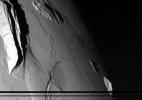
|
|||||

|
2002-12-06 | Io |
Galileo |
Solid-State Imaging |
4200x3200x3 |
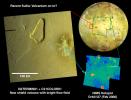
|
|||||

|
2002-12-06 | Io |
Galileo |
Solid-State Imaging |
720x431x3 |
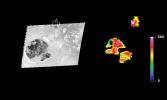
|
|||||

|
2007-04-02 | Io |
New Horizons |
LORRI |
500x256x1 |
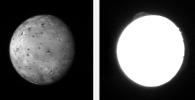
|
|||||

|
2007-04-02 | Io |
New Horizons |
LORRI |
420x420x1 |
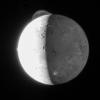
|
|||||

|
2007-04-02 | Io |
New Horizons |
LORRI |
498x494x1 |
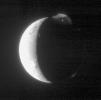
|
|||||

|
2007-04-02 | Io |
New Horizons |
MVIC |
249x235x3 |
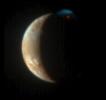
|
|||||

|
2007-04-02 | Io |
Galileo Voyager |
Solid-State Imaging |
11445x3643x3 |

|
|||||

|
2007-04-17 | Io |
New Horizons |
MVIC |
386x199x3 |
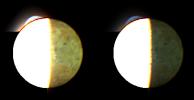
|
|||||

|
2007-05-01 | Io |
New Horizons |
LORRI |
343x339x1 |
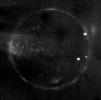
|
|||||

|
2007-05-01 | Io |
New Horizons |
LORRI |
179x179x1 |
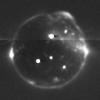
|
|||||

|
2007-05-01 | Io |
New Horizons |
LORRI Solid-State Imaging |
3000x2025x3 |
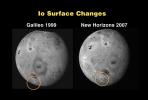
|
|||||

|
2007-05-01 | Io |
New Horizons |
LORRI |
496x370x3 |
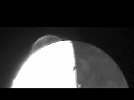
|
|||||

|
2007-05-01 | Io |
New Horizons |
LORRI |
399x852x1 |
|
|
|||||

|
2007-05-01 | Io |
New Horizons |
LEISA LORRI MVIC |
3000x2025x3 |
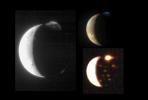
|
|||||

|
2007-05-01 | Io |
New Horizons |
LORRI |
399x397x1 |
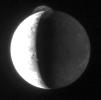
|
|||||

|
2007-05-14 | Io |
New Horizons |
LORRI |
512x512x1 |
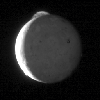
|
|||||

|
2007-10-09 | Io |
New Horizons |
LEISA LORRI |
959x704x3 |
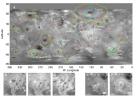
|
|||||

|
2007-10-09 | Io |
New Horizons |
LEISA LORRI |
610x912x3 |

|
|||||

|
2007-10-09 | Io |
New Horizons |
LORRI Ultraviolet Light |
504x720x3 |

|
|||||

|
2007-10-09 | Io |
New Horizons |
LEISA LORRI MVIC |
2700x3600x3 |

|
|||||

|
2007-10-16 | Io |
New Horizons |
LEISA MVIC |
599x597x3 |

|
|||||

|
2008-02-28 | Io |
New Horizons |
MVIC |
600x300x3 |
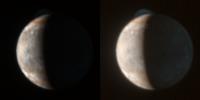
|
|||||

|
2011-05-12 | Io |
Galileo |
1668x1648x3 | |

|
|||||

|
2013-04-04 | Io | 963x913x3 | ||
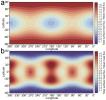
|
|||||

|
1996-01-02 | Io |
Galileo |
3014x2422x3 | |
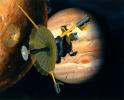
|
|||||

|
2014-08-04 | Io |
Gemini North Telescope W. M. Keck Observatory |
900x900x3 | |
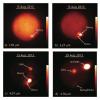
|
|||||

|
2014-08-04 | Io |
Gemini North Telescope |
434x479x3 | |

|
|||||

|
2018-07-13 | Io |
Juno |
JIRAM |
2400x1800x3 |
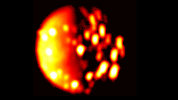
|
|||||

|
2018-07-13 | Io |
Juno |
JIRAM |
2400x1800x3 |
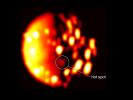
|
|||||

|
2018-07-13 | Io |
Juno |
JIRAM |
2400x1800x3 |
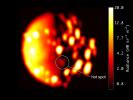
|
|||||

|
2022-12-14 | Io |
Juno |
JIRAM |
1123x1120x3 |
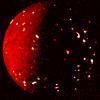
|
|||||

|
2023-05-15 | Io |
Juno |
JunoCam |
1024x1024x3 |
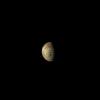
|
|||||

|
2023-05-15 | Io |
Juno |
JIRAM |
1191x400x3 |
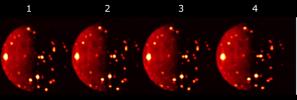
|
|||||

|
2023-05-15 | Io |
Juno |
JunoCam |
3313x859x3 |

|
|||||

|
2023-05-15 | Io |
Juno |
JunoCam |
1724x859x3 |
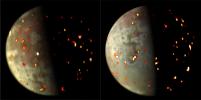
|
|||||

|
2023-07-26 | Io |
Juno |
JunoCam |
2261x1892x3 |
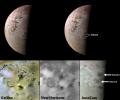
|
|||||

|
2023-12-22 | Io |
Juno |
JunoCam |
5037x5223x3 |

|
|||||

|
2023-12-22 | Io |
Juno |
JunoCam |
1091x961x3 |

|
|||||

|
2024-04-17 | Io |
Juno |
JunoCam |
2296x2296x3 |
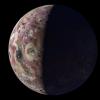
|
|||||

|
2024-04-18 | Io |
Juno |
JunoCam |
1070x450x3 |
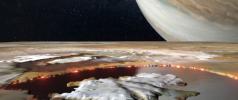
|
|||||

|
2024-04-18 | Io |
Juno |
JunoCam |
1059x452x3 |
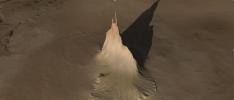
|
|||||

|
2001-01-31 | Himalia |
Cassini-Huygens |
Imaging Science Subsystem |
735x540x3 |
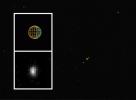
|
|||||

|
1996-01-29 | Ganymede |
Voyager |
VG ISS - Narrow Angle |
2000x2000x3 |
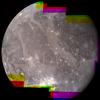
|
|||||

|
1996-06-06 | Ganymede |
Galileo |
Solid-State Imaging |
825x825x1 |

|
|||||

|
1997-09-07 | Ganymede |
Galileo |
Solid-State Imaging |
526x797x1 |

|
|||||

|
1997-09-07 | Ganymede |
Galileo |
Solid-State Imaging |
1105x798x1 |
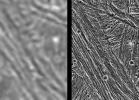
|
|||||

|
1997-09-07 | Ganymede |
Galileo |
Solid-State Imaging |
640x480x1 |
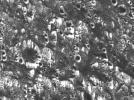
|
|||||

|
1997-09-07 | Ganymede |
Galileo |
Solid-State Imaging |
574x798x1 |

|
|||||

|
1997-09-07 | Ganymede |
Galileo |
Solid-State Imaging |
544x796x1 |

|
|||||

|
1997-09-07 | Ganymede |
Galileo |
Solid-State Imaging |
1443x1656x1 |

|
|||||

|
1998-06-04 | Ganymede |
Voyager |
VG ISS - Wide Angle |
1024x520x3 |
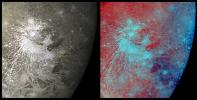
|
|||||

|
1996-07-17 | Ganymede |
Voyager |
VG ISS - Narrow Angle |
300x300x1 |
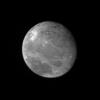
|
|||||

|
1996-07-17 | Ganymede |
Voyager |
VG ISS - Narrow Angle |
300x300x3 |
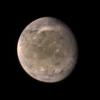
|
|||||

|
1999-03-15 | Ganymede |
Voyager |
VG ISS - Narrow Angle |
600x600x3 |
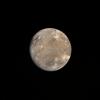
|
|||||

|
1996-07-17 | Ganymede |
Voyager |
VG ISS - Narrow Angle |
460x780x1 |

|
|||||

|
1999-02-06 | Ganymede |
Voyager |
VG ISS - Narrow Angle |
740x730x3 |
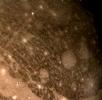
|
|||||

|
1999-02-06 | Ganymede |
Voyager |
VG ISS - Narrow Angle |
816x870x3 |

|
|||||

|
1997-01-09 | Ganymede |
Voyager |
VG ISS - Narrow Angle |
700x500x1 |
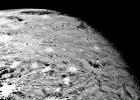
|
|||||

|
1997-09-07 | Ganymede |
Galileo |
Solid-State Imaging |
2470x2110x1 |
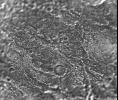
|
|||||

|
1997-09-07 | Ganymede |
Galileo |
Solid-State Imaging |
1665x1882x1 |

|
|||||

|
1997-11-18 | Ganymede |
Galileo |
Solid-State Imaging |
400x400x1 |
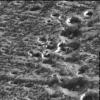
|
|||||

|
1997-11-18 | Ganymede |
Galileo |
Solid-State Imaging |
560x905x1 |

|
|||||

|
1997-11-18 | Ganymede |
Galileo |
Solid-State Imaging |
1920x1080x3 |
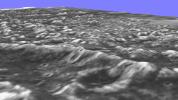
|
|||||

|
1998-03-26 | Ganymede |
Galileo |
Near Infrared Mapping Spectrometer |
1950x1500x3 |
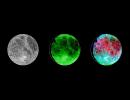
|
|||||

|
1997-12-16 | Ganymede |
Galileo |
2667x2000x3 | |
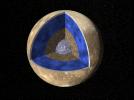
|
|||||

|
1997-11-18 | Ganymede |
Galileo |
Solid-State Imaging |
1920x1080x3 |
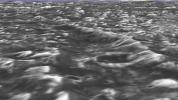
|
|||||

|
1997-09-07 | Ganymede |
Galileo |
Solid-State Imaging |
1200x800x1 |
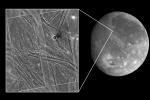
|
|||||

|
1997-09-07 | Ganymede |
Galileo |
Solid-State Imaging |
1200x800x1 |
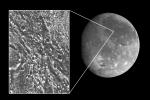
|
|||||

|
1997-09-07 | Ganymede |
Galileo |
Solid-State Imaging |
1097x885x1 |
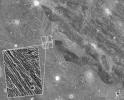
|
|||||

|
1997-09-07 | Ganymede |
Galileo |
Solid-State Imaging |
800x800x1 |
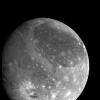
|
|||||

|
1997-09-07 | Ganymede |
Galileo |
Solid-State Imaging |
580x360x1 |
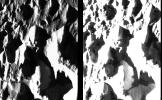
|
|||||

|
1998-08-03 | Ganymede |
Galileo |
Solid-State Imaging |
800x800x3 |
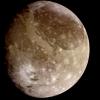
|
|||||

|
1997-09-07 | Ganymede |
Galileo |
Solid-State Imaging |
523x764x1 |

|
|||||

|
1998-03-26 | Ganymede |
Galileo |
Near Infrared Mapping Spectrometer |
1143x635x3 |
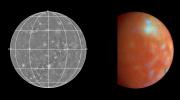
|
|||||

|
1998-03-26 | Ganymede |
Galileo |
Near Infrared Mapping Spectrometer |
1588x762x3 |
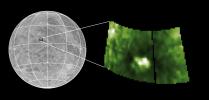
|
|||||

|
1998-03-26 | Ganymede |
Galileo |
Near Infrared Mapping Spectrometer |
445x525x1 |

|
|||||

|
1997-11-18 | Ganymede |
Galileo |
Solid-State Imaging |
321x260x1 |
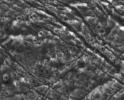
|
|||||

|
1997-11-18 | Ganymede |
Galileo |
Solid-State Imaging |
519x520x1 |
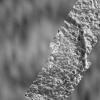
|
|||||

|
1997-11-18 | Ganymede |
Galileo |
Solid-State Imaging |
411x431x1 |

|
|||||

|
1997-11-18 | Ganymede |
Galileo |
Solid-State Imaging |
245x203x1 |
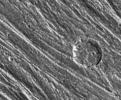
|
|||||

|
1997-11-18 | Ganymede |
Galileo |
Solid-State Imaging |
430x370x1 |
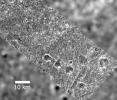
|
|||||

|
1997-11-18 | Ganymede |
Galileo |
Solid-State Imaging |
382x341x1 |
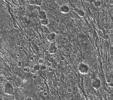
|
|||||

|
1997-11-18 | Ganymede |
Galileo |
Solid-State Imaging |
357x283x1 |
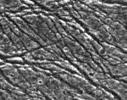
|
|||||

|
2000-08-03 | Ganymede |
Galileo |
Solid-State Imaging |
2133x1600x3 |
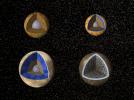
|
|||||

|
1997-11-20 | Ganymede |
Galileo |
Solid-State Imaging |
648x471x1 |
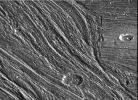
|
|||||

|
1997-11-21 | Ganymede |
Galileo |
Solid-State Imaging |
648x531x1 |
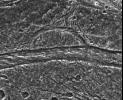
|
|||||

|
1997-11-24 | Ganymede |
Galileo |
Solid-State Imaging |
648x460x1 |
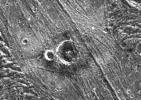
|
|||||

|
1997-11-25 | Ganymede |
Galileo |
Solid-State Imaging |
400x278x1 |
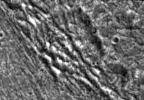
|
|||||

|
1997-11-26 | Ganymede |
Galileo |
Solid-State Imaging |
620x540x1 |
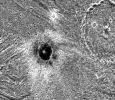
|
|||||

|
1997-12-01 | Ganymede |
Galileo |
Solid-State Imaging |
720x379x1 |
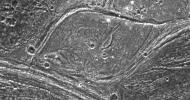
|
|||||

|
1998-01-21 | Ganymede |
Galileo |
Photopolarimeter-Radiometer |
988x1330x3 |

|
|||||

|
1998-01-21 | Ganymede |
Galileo |
Photopolarimeter-Radiometer |
988x1233x3 |

|
|||||

|
1998-04-02 | Ganymede |
Galileo |
Photopolarimeter-Radiometer |
432x540x3 |

|
|||||

|
1999-03-13 | Ganymede |
Voyager |
VG ISS - Narrow Angle |
830x650x3 |
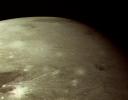
|
|||||

|
1999-03-13 | Ganymede |
Voyager |
VG ISS - Narrow Angle |
875x905x3 |

|
|||||

|
1999-03-13 | Ganymede |
Voyager |
VG ISS - Narrow Angle |
860x901x3 |

|
|||||

|
1999-03-13 | Ganymede |
Voyager |
VG ISS - Narrow Angle |
780x910x3 |

|
|||||

|
1998-07-15 | Ganymede |
Galileo |
Solid-State Imaging |
790x1413x1 |

|
|||||

|
 |
 |
 |
 |
 |
 |
 |
 |
 |
 |

|
| 1-100 | 101-200 | 201-300 | 301-400 | 401-500 | 501-600 | 601-700 | 701-800 | 801-900 | 901-1000 |
| Currently displaying images: 801 - 900 of 1199 |